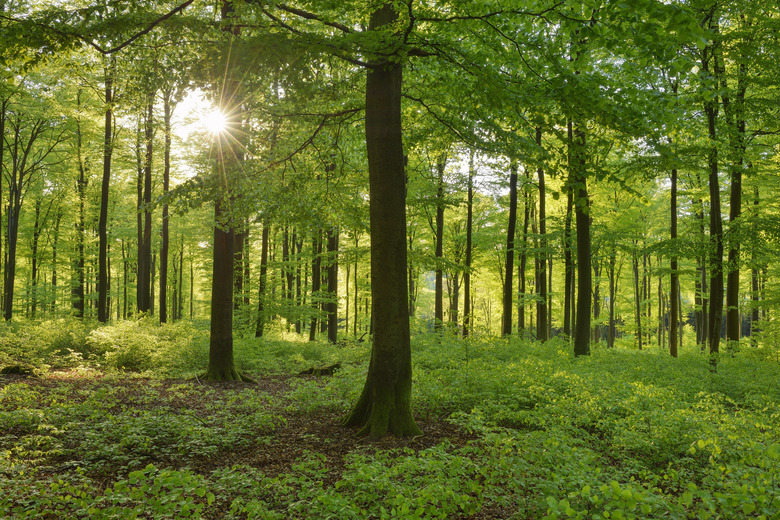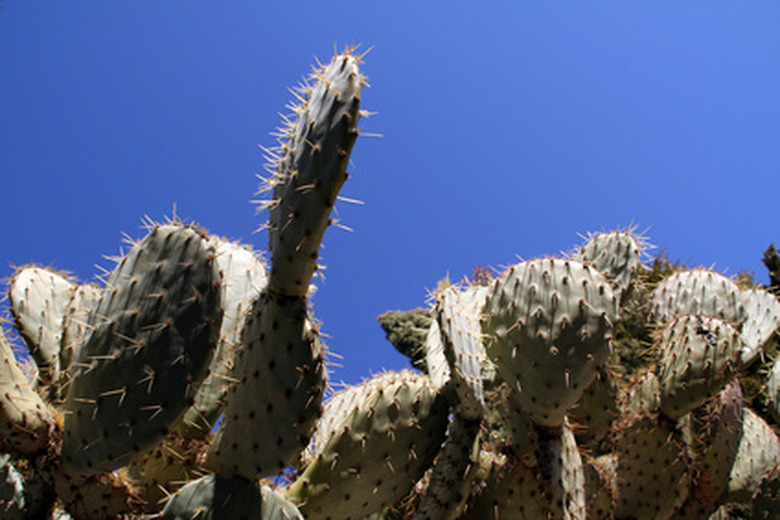Different Biome Types
Biomes such as forests and grasslands all over the world are diminishing every second, mainly due to the activities of one species: man. Scientists define biomes as expansive areas of the world that house animal and plant life specifically adapted to those regions. Many scientists agree that five major biomes exist throughout the world, although some suggest divisions within the major types.
Aquatic (Freshwater and Marine Biomes)
Aquatic (Freshwater and Marine Biomes)
Rivers, streams, lakes and ponds comprise freshwater biomes. The wetlands such as marshes and swamps, which are part of freshwater biomes, support plant species that thrive in extreme moisture. The World Biomes website asserts that wetlands accommodate a rich array of animal life, ranging from insects to amphibians and mammals. Rivers and streams support many types of organisms, such as salmon and catfish, that have adapted to the ever-moving fresh water not found among the still waters of ponds and lakes.
Marine biomes consist of several levels, each responsible for maintaining particular living conditions for specific organisms. Coral reefs, composed of mutualistic combinations of algae and animals, hug the contours of the shoreline, providing habitats for colorful and unique octopi and starfish species. The pelagic zone denotes what you typically would consider the open ocean. The abyssal zone lying at the very bottom of oceans constitutes a region of extremely low temperature and tremendous pressure. The legendary coelacanth, a contemporary of dinosaurs and long thought to be extinct, inhabits the Indian Ocean's abyss. Abyssal zone fish seem to glow in the dark, a characteristic termed photoluminescence. (See References 4)
Desert
Desert
Deserts receive less than 50 cm of rainfall per year. Several types of desert exist: the hot and dry, semiarid, coastal and cold. According to the University of California's Museum of Paleontology, the Atacama Desert of Chile, the world's driest desert, averages under 1.5 cm of rain a year. In deserts, the rate of water evaporation surpasses the rate of rainfall. The soil is usually coarse and drains well. Plant life, or flora, leans toward short and stocky stems with compact leaves, indicative of cactus-like vegetation. Animals, or fauna, thriving in desert regions reduce daylight activities in favor of foraging at night when temperatures cool. Surprisingly, deserts also exist in the intense frigidity of the Arctic, Antarctica and Greenland.
Forest
Forest
The World Biomes website states that forests cover about a third of the world's land. The dense foliage of the tallest trees allows limited amounts of sunlight to penetrate to the forest floor. Tropical forests receive the most rainfall and have only two seasons: rainy and dry. Temperate forests house plant species such as maple and oak and animals such as bears, foxes and deer. The boreal forests, or taiga, cover large areas of land in northern parts of Asia, Europe and North America.
Grassland
Grassland
Various grasses and small shrubs dominate the grasslands. Animals that inhabit grasslands include grazers such as antelope and bison, and their predators. Insects and small reptiles also share this biome. Grassland biomes include the prairies, steppes and savannas. The prairies, typically found within the United States, consist of populations of high grasses. The steppes do not get as much rainfall as the prairies. Savannas are hot and dry, and are found mainly in the interior of the African continent.
Tundra
Tundra
The coldest weather on Earth belongs to the arctic and alpine tundras. Depicted by its scanty rainfall and low temperatures, the arctic tundra possesses a stratum of permanently frozen subsoil called permafrost. Because of the short growing season, plants reproduce asexually by budding. Winter temperatures average about -30 degrees Fahrenheit. During the warmer months, the temperature may hover in the low 50s.
Altitude is the key to alpine tundra locations; they exist near the summits of mountains worldwide. Alpine tundras represent less hostile environments with growing seasons encompassing half the year as compared to the 60-day growing season of the arctic tundra.
Cite This Article
MLA
Dinh, Ho-Diep. "Different Biome Types" sciencing.com, https://www.sciencing.com/different-biome-types-6872242/. 22 November 2019.
APA
Dinh, Ho-Diep. (2019, November 22). Different Biome Types. sciencing.com. Retrieved from https://www.sciencing.com/different-biome-types-6872242/
Chicago
Dinh, Ho-Diep. Different Biome Types last modified March 24, 2022. https://www.sciencing.com/different-biome-types-6872242/





